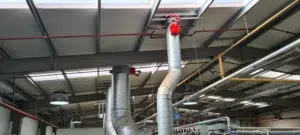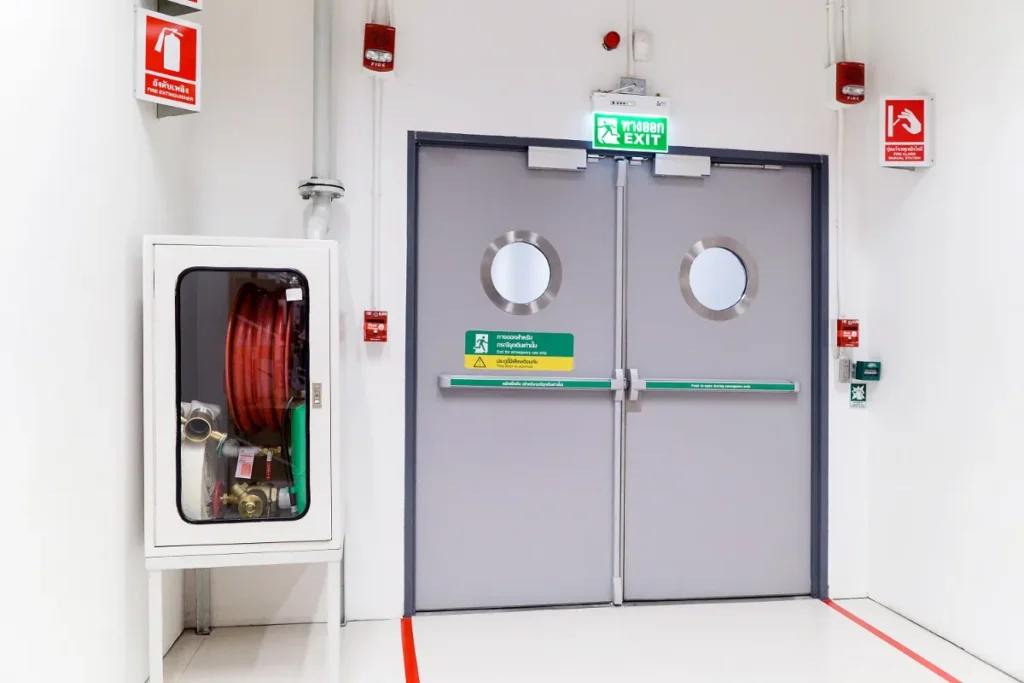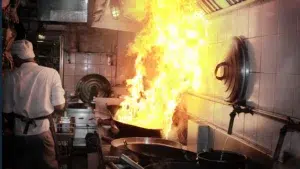
The Importance of Integrating Extraction Systems and Machinery into Fire Alarm Systems
When we talk about keeping workplaces safe, installing a fire alarm system is usually one of the first steps that come to mind. But a fire alarm system can do
Book your FREE, no-strings-attached Fire Safety Audit to ensure that you’re properly protected from the risk and comply with current fire safety legislation.
Get essential insights and updates
in fire safety – straight to your inbox!
Fire doors are specifically engineered to withstand high temperatures and block the passage of flames and smoke for a specified period, often ranging from 30 to 120 minutes. They are typically constructed from materials like solid timber, steel, or composite materials and feature intumescent seals that expand under heat to close any gaps.
Strategically placed throughout buildings, fire doors:

A lesser-known benefit of fire doors is their ability to reduce sound transmission. This quality stems from their construction and sealing mechanisms, which are designed to limit airflow and gaps that could otherwise allow smoke and flames to pass through. These same features make them effective at dampening sound.
Fire doors are often tested for their acoustic performance, with many achieving high Sound Transmission Class (STC) ratings. The intumescent seals and dense core materials help block sound waves, creating quieter environments within buildings. This can be particularly advantageous in settings such as hospitals, offices, or residential complexes, where minimizing noise is important.
While fire doors are effective at reducing sound transmission, this characteristic can impact the audibility of fire alarms. Fire alarm systems are designed to alert all occupants in a building to evacuate in an emergency, and fire doors can muffle the sound of these alarms in enclosed spaces. To address this, building codes and fire safety regulations mandate specific measures:
The dual purpose of fire doors—providing fire protection and reducing sound transmission—highlights their importance in building design. However, it also underscores the need for careful planning to ensure that safety measures, like fire alarms, are not compromised. Collaboration between architects, fire safety engineers, and building managers is essential to achieve this balance.
In conclusion, fire doors are vital not only for their life-saving ability to contain fire and smoke but also for their contribution to sound control within buildings. By understanding their impact on fire alarm sound coverage and implementing the appropriate measures, we can create safer, more functional spaces for everyone.

When we talk about keeping workplaces safe, installing a fire alarm system is usually one of the first steps that come to mind. But a fire alarm system can do

Fire safety is crucial for every business, institution, and community. One key role that helps maintain fire safety standards is the fire marshal. Proper training equips fire marshals with the

When we think about fire safety, things like fire extinguishers, smoke alarms, and sprinkler systems usually come to mind. But there’s one tool that’s often forgotten—the fire blanket. It’s simple,
Video Smoke Detection is perfect for a fast response to fires in high roofed buildings and harsh operating conditions.
Watch Smokecatcher detect smoke in an MSW storage building. The smoke is coming through from a fire in the adjoining storage area.
Watch Smokecatcher detect a fire in an SRF Storage bunker. Sadly, the alarm wasn’t responded to and the site lost a 4hr window of opportunity between smoke detection and flames appearing.
Video Smoke Detection overcomes the risks of stratification and other challenges for early fire detection in logistics and storage facilities.
Watch Fire Rover detect and suppress a fire in the waste bunker at an EFW facility!
See how the Fire Rover detects and suppresses this fire at a clients tipping hall. Note how the smok is spreading out at low leve, rather than rising. This is called ‘stratification’ and is one of the many reasons why roof-mounted smoke detection systems like beam detectors and HSSD is not suitable for many recycling applications.
Watch the Fire Rover detect and suppress a fire at a battery storage facility. This targeted and intellegent control makes the Fire Rover particularly well suited to high hazard storage applications.
Watch the Fire Rover tackle a battery fire in a tipping hall. Note how the exploding battery cells start three separate fires, which the operator individually suppresses (whilst avoiding the site operators in the vicinity).
Get essential insights and updates in fire safety – straight to your inbox!